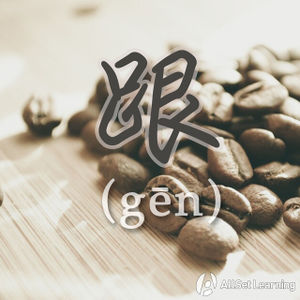Difference between revisions of "Basic comparisons with "yiyang""
m (Text replace - "Adjectives and Adverbs" to "Adverbs with Adjectives") |
|||
| Line 10: | Line 10: | ||
<div class="jiegou"> | <div class="jiegou"> | ||
| − | Subject + 跟 / 和 + Noun + 一样 | + | Subject + 跟 / 和 / 像+ Noun + 一样 |
</div> | </div> | ||
| Line 18: | Line 18: | ||
<div class="liju"> | <div class="liju"> | ||
| − | * 我 <em> | + | * 我 <em>像</em> 你 <em>一样</em>。 |
* 啤酒 <em>和</em> 葡萄酒 <em>一样</em> 吗? | * 啤酒 <em>和</em> 葡萄酒 <em>一样</em> 吗? | ||
* 美国 <em>跟</em> 英国 不 太 <em>一样</em>。 | * 美国 <em>跟</em> 英国 不 太 <em>一样</em>。 | ||
| Line 29: | Line 29: | ||
<div class="jiegou"> | <div class="jiegou"> | ||
| − | Noun 1 + 跟 + Noun 2 + 一样 + Adjective | + | Noun 1 + 跟 / 和 / 像 + Noun 2 + 一样 + Adjective |
</div> | </div> | ||
| Line 40: | Line 40: | ||
* 你 <em>跟</em> 我 <em>一样</em> 高。 | * 你 <em>跟</em> 我 <em>一样</em> 高。 | ||
| − | * 他们 <em> | + | * 他们 <em>和</em> 我们 <em>一样</em> 酷。 |
| − | * 小狗 <em> | + | * 小狗 <em>像</em> 小猫 <em>一样</em> 可爱。 |
</div> | </div> | ||
Revision as of 10:17, 6 July 2012
-
Level
-
Similar to
-
Used for
-
Keywords
As well as with 比 and 没有, there is a third way to make basic comparisons: with 一样 (yīyàng).
Rather than expressing that two things differ regarding a particular quality, 一样 is used to express that two things are the same in some way.
Simple Form
The simple structure is to states that two things are equal is:
Subject + 跟 / 和 / 像+ Noun + 一样
Some examples:
- 我 像 你 一样。
- 啤酒 和 葡萄酒 一样 吗?
- 美国 跟 英国 不 太 一样。
Specific Adjective Form
To add an adjective into the mix, just place it after 一样:
Noun 1 + 跟 / 和 / 像 + Noun 2 + 一样 + Adjective
This describes Noun 1 as being as adjective as Noun 2.
Some examples:
- 你 跟 我 一样 高。
- 他们 和 我们 一样 酷。
- 小狗 像 小猫 一样 可爱。



